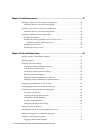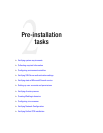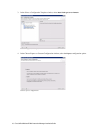
12 Cisco Unified Web and E-Mail Interaction Manager Installation Guide
Additional partitions
Meant for enterprise-wide deployments, a single installation of Unified WIM and Unified EIM can be used by
independent business units in an organization with the help of separate business partitions. While the hardware
and software is common for all partitions, system resources and business objects are stored and managed
separately for each partition. Create additional partitions if you want to:
Segregate data between business units in your enterprise.
Serve multiple customers from a single installation.
Additional business partitions are ideal for organizations where business units (or clients, in the case of an
outsourced services provider) do not need to share customer, interaction, or product information. For example, a
bank that serves individual retail consumers as well as corporations might want two partitions as the product
offerings and customer service needs for these segments are different. Partitions can also be used for different
geographies. The same bank, to continue with our example, might choose to use separate partitions for their US
and China businesses because of legal and regulatory needs.
The installation program, by default, sets up two partitions:
1. The System partition, which is shared by all business partitions
2. A business partition with one department
You can create additional business partitions by using the installation program (see “Additional partitions” on
page 76).
Each partition is created with one department.
While partitions do not share system resources or business objects,
departments within a partition share system resources and can also share specific business resources. Additional
departments are created in the Administration Console. See Cisco Unified Web and E-Mail Interaction Manager
Administration Console User’s Guide for more information.


















